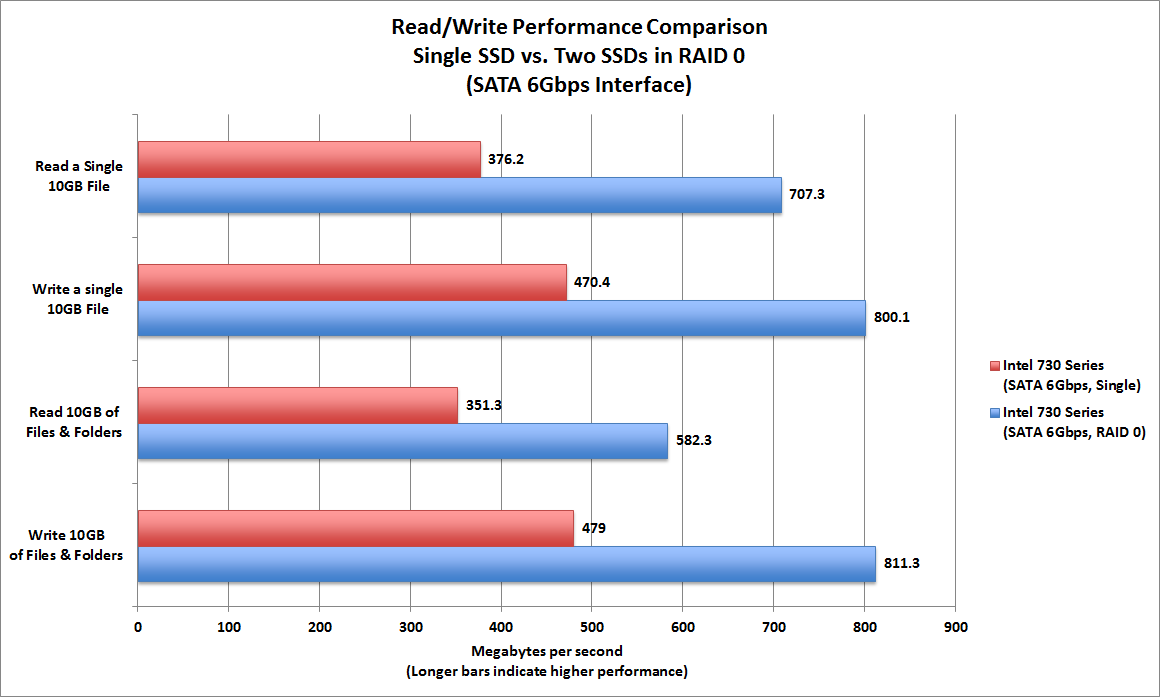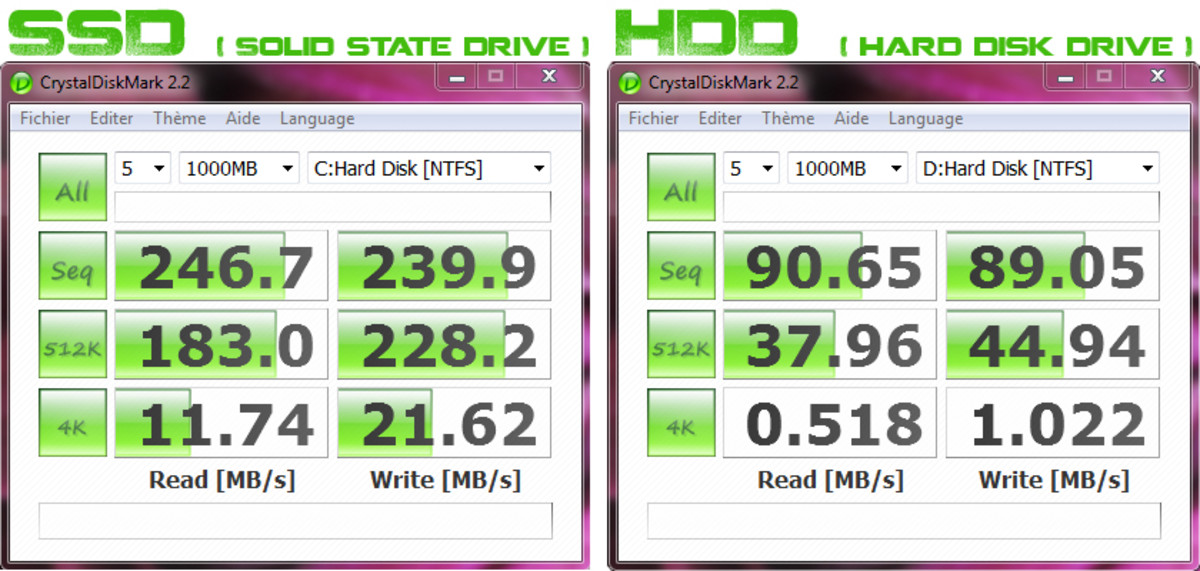


Had a support ticket open, nice guys but this got no solutions.Īll the drivers are up to date incl. Also it seems the raid 0 is performing slower than a single SSD. I recently run the the benchmark again and speeds are now around 450mb/s in raid 0 so I lost almost 50% performance. I setup the Z620 wit 2 x 860 EVos 250GB SSD's about 1 year ago and during our initial testing wit different strip sizes and bench marking I found a rraid 0 in the intel sata bridge with a block size of 16kb to be the most balanced setup and I got about 900 - 1000 seq.
#RAID 0 SSD BENCHMARK UPGRADE#
For more information visit Notebook Hardware and Upgrade Questions
#RAID 0 SSD BENCHMARK SOFTWARE#
Shirley Zhang is a data recovery expert in DataNumen, Inc., which is the world leader in data recovery technologies, including mdf recovery and outlook repair software products. Hence, please dismiss such ideas at once! If you long for SSD’s speed and HDD’s storage at the same time, why not select a hybrid hard drive (HHD)? Author Introduction: Therefore, even if you add a SSD to HDD RAID 0, your RAID 0 will still work in the same speed as HDD, instead of the newly added SSD.īased on all mentioned above, you cannot benefit a lot from adding a SSD to HDD RAID 0. Real Read/Write Speedsįurthermore, like the storage capacity, the read/write speed of a RAID 0 is also dependent on the drive with the slowest speed in the array. For example, if your RAID 0 has two drives of 110 GB and 240 GB, the actual capacity of the RAID 0 is only 110 GB times two, namely 220 GB. It is because that the total capacity of a RAID 0 array is based on the drive with the smallest capacity in the array. If you intend to add a SSD just for additional storage space, you’d better dismiss this idea as well. If it has exceeds what the controller can bear, imposing a SSD will destroy the array. Therefore, if you would like to add a SSD to a HDD RAID 0, you should consider the controller’s capacity. It is responsible for managing all the drives in the array. In addition, RAID controller plays a greatly important role in RAID function. Otherwise, the array will be pretty unstable and more prone to fail. It is always suggested to utilize the same type of drives in one RAID system. To be honest, you will not benefit from adding a solid state drive to HDD RAID 0. However, RAID 0 will indeed help you achieve fairly fast performance. It means that when one drive fails, the entire array will crash. In this way, it doesn’t offer fault tolerance or redundancy. It will scatter data cross drive equally, namely splitting/striping data evenly across drives. RAID 0 requires an even number of drives in the array. Now, thereinafter, we will discuss about this question in detail. Nevertheless, is it okay to do this? Will adding SSD to HDD RAID 0 cause data loss or data corruption such as corrupt Outlook file? Many users are confused about it. Due to the fact that SSD works much faster than HDD, lots of users hope to add a SSD to RAID 0 that is set up with HDD, desiring to use SSD as the boot drive and HDDs in the array for data storage. But is it possible and right? This post will delve into this issue.Īs we all know, solid state drive (SSD) is a type of drive which is entirely different from mechanical hard disk drive (HDD), no matter in operating principles, drive components and so on. So as to achieve greater performance in RAID 0, which is set up with HDDs, some users wish to add a SSD to such RAID system. Solid state drive (SSD) works much faster than traditional hard disk drive (HDD).


 0 kommentar(er)
0 kommentar(er)
